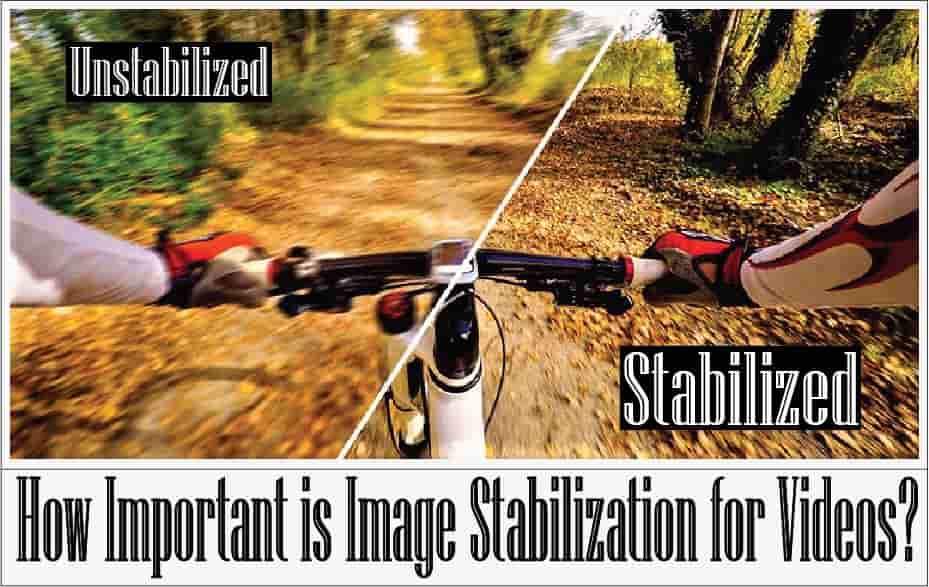
For this reason, our comment section is blown up with questions like How Important is Image Stabilization for Videos and how to prevent blurring and shakiness in videos and photos. So, here’s your answer.
Table of Contents
How Important is Image Stabilization for Videos and Photos?
Image stabilization is very important for videos and pictures if you don’t like using a tripod every time. No matter how experienced you are, the shakiness of your hand is a problem, and the Image Stabilization compensates for this.
Why is Image Stabilization Necessary?
There are mainly three reasons, due to which a video or an image might be blurry:
- The subject is out of focus
- The Subject is in motion
- The pic is taken handheld and hand shakiness occurs
For the above three reasons, the 3rd one is very common. Not many people like to move around with a tripod. Most photographers like me move around with just a camera or even with a smartphone. In these scenarios, the shakiness of the hand is very common even for an experienced photographer.
So, to address this problem and save you from clicking blurry images and capturing blurry videos image stabilization was first developed and today it works like a charm. Today we are going to discuss the importance of Image Stabilization and also how it works.
Having Image Stabilization in your camera or lens helps to overcome the unintentional movement in the photo and prevents blurring and out-of-focus photos and videos.
In videos, the concept of stabilization is even more important. If you make a video while walking around, without the image stabilization, your video will be very shaky. On the other hand, with the image stabilization, you will get a smooth video as the shakiness will be compensated by the stabilization built-in in your gear.
Why Do We Need Image Stabilization?
As mentioned before, it’s all about the camera shake. However focal length also plays a big factor. Increasing your focal length not only magnifies your subject but also magnifies the effect of the camera shake.
So, the rule of thumb says that your minimum shutter speed should be equal to or higher than the focal length you are using. In my case I have a 100mm – 400mm here, so on a full-frame zoom all the way in 400mm, I need a minimum shutter speed of 400mm.
However, in lowlight conditions, it can sometimes be very challenging to shoot with fast shutter speeds as you might have a high ISO. This is where Image Stabilization can help us out. Enabling Image Stabilization means we can lower the shutter speed, and this will also bring the ISO down.
How does Image Stabilization work?
Now as you know how you can overcome your problem, let’s learn a little about the working of Image Stabilization. There are generally three types of IS which will be discussed further below.
Sensor-Based Image Stabilization
You must be thinking about how the camera detects those unintentional movements. Well, there is a gyro detection sensor inside the camera that detects the shake, and this sensor is so fast and efficient that it can quickly detect even a slight movement in almost no time and send the signal about the movement to the camera’s processor.
After that, the processor analyzes the data and decides in which direction the sensor should move to compensate for shake and then the processor sends the movement information or in plain words, movement orders to the stabilization mechanism that is attached to the image sensor inside the camera.
So, if you move the camera in the left direction, your camera’s stabilization mechanism will move to the opposite direction meaning the right to eliminate the shake. The same technique is followed for all the axes to counter every possible shake and that’s how you get smooth footage.
Lens Based Image Stabilization
Sensor-Based Stabilization works fine generally but is not very effective if we are using longer lenses and this is where we need Lens Based Image Stabilization. Speaking of lens Based Image stabilization, it is found on the lenses as the name suggests.
If you take a look at the inner part of the lens, you will find that the lens is made of different glass elements and light has to pass through all the elements before reaching the sensor. So, what if the lens glass elements move accordingly to the camera shake? Yup! You guessed it. These glass element movements compensate for the unwanted movements and the sensor get a smooth image.
Well, this is the main concept of lens-based stabilization. In some cameras, the sensor and the lens-based stabilization work in coordination with each other and give you the best stabilization experience however these stabilizations can make the prices of the cameras and lenses go crazy.
Digital/Electronic Stabilization
The previous types of stabilization we discussed were hardware-based stabilization and now we are going to talk about software-based image stabilization called electronic or digital image stabilization.
In this method of stabilization, each frame is analyzed by the processor to determine the shake. Then the frames are matched and aligned by the processor which creates center stability in the footage. This process involves a crop factor to align the footage frame by frame and this is one of the biggest issues with electronic image stabilization.
From the definition, it is clear that electronic stabilization works best for higher frames per second because more frames mean lesser movement per frame and thus the processor needs to work less and land the frames. Therefore, cameras with high fps like the GoPro and iPhones use electronic stabilization but for bigger cameras, it’s not the best option.
For More Info Visit Here
Conclusion
I hope that now You have a clear idea of what Image Stabilization is and what is its role the photography and videography. As explained above, image stabilization is very important for videos and images as it will help eliminate the unintentional shakiness and blurriness in the footage or photo.

